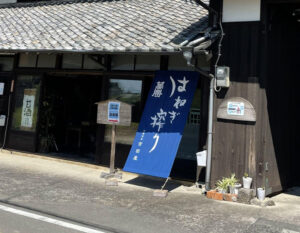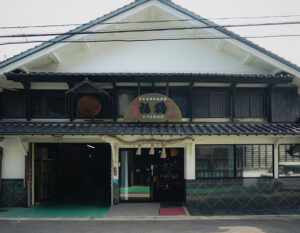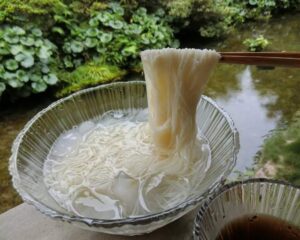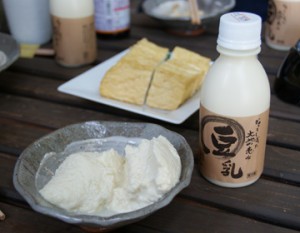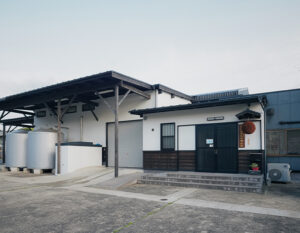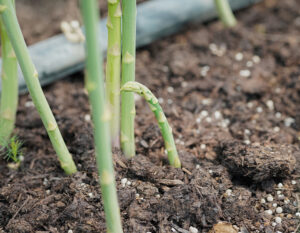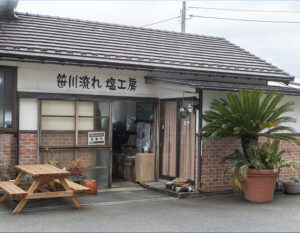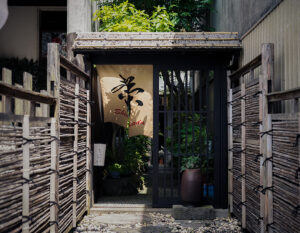In Nagasaki, there is a hot spring resort that is said to have the highest “hot spring calorific value” in Japan, which is calculated by multiplying the amount of hot spring water gushing out by the temperature of the hot spring water. On the west side of the Shimabara Peninsula is Kohama Onsen, a hot spring where steamy water billows out from every corner of the town. We visited Tatehiro Kimura of “Unzen Ecolo Salt,” who continues to make salt using an environmentally friendly method that makes use of the energy of the land.
About the Shimabara Peninsula where Kohama Onsen is located
The Shimabara Peninsula, located in the southern part of Nagasaki Prefecture, is rich in natural beauty and is known as the “Nagasaki Prefecture Shimabara Peninsula UNESCO World Geopark,” centering on the active volcano “Unzen Volcano”. The peninsula has a large underground magma reservoir that has sometimes caused major disasters, but has also provided geothermal heat and hot springs to the people living on the peninsula. The peninsula is also known as “Unzen Hot Spring Resort” because the hot spring resorts of Shimabara, Unzen, and Obama are located across the peninsula from east to west, and many more are scattered along the north and south sides of the peninsula.
Obama Hot Spring Features
Kohama Onsen, located on the west side of Unzen Hot Spring Resort, is a scenic hot spring resort overlooking Tachibana Bay where the sunset is beautiful. The town is dotted with about 30 hot spring sources, so one can see the steam rising from them here and there. The temperature of the hot spring is extremely high, around 105 degrees Celsius, and the “hot spring calorific value,” which is calculated by multiplying the amount of hot spring water gushing out by the temperature of the water, is the highest in Japan. The area has so much geothermal energy that a power generation project is underway.
History of Obama Hot Springs and Salt Making
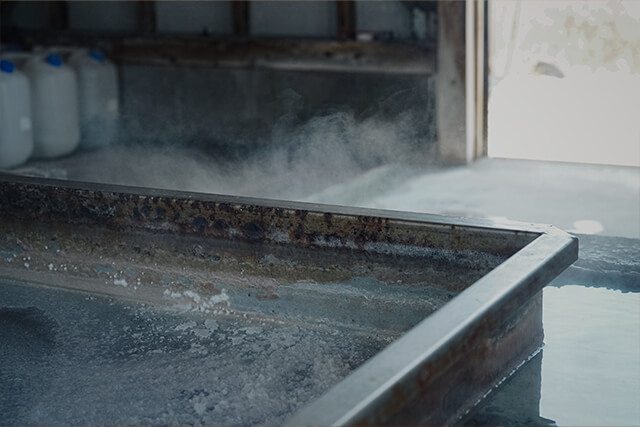
Kohama Onsen, which boasts an unparalleled amount of hot spring heat, has a history of flourishing in the salt manufacturing industry. Taking advantage of the location of the high-temperature hot springs near the coast, the salt manufacturing industry began in earnest in 1941. The salt manufacturing method is the hot water boiling method, in which pumped up hot spring water is evaporated by the heat of the source. The salt imports were drastically reduced due to the World War II, and the local salt supply had to be secured as soon as possible. During the postwar period, when supplies were scarce, salt production in the area accounted for 2% of the nation’s salt production. However, the salt production method required large quantities of hot spring water, and by 1955, the salt sources were nearly depleted. However, the salt production method, which required large quantities of hot spring water, was affected by the depletion of the source in 1955. Furthermore, natural disasters and cheap salt imports from overseas gradually made it unprofitable, and in 1965, salt production at Obama Onsen completely ceased.
Tatehiro Kimura, who revived salt production at Kohama Onsen
The history of the salt manufacturing industry in Kohama Onsen was completely cut off. However, after about 50 years, someone has single-handedly restarted salt production in Kohama, using an environmentally friendly method. He is Tatehiro Kimura of Unzen Ecolo Salt.

Mr. Kimura originally ran a sushi restaurant in Nagasaki City and was a skilled sushi chef himself. He is very particular about the taste of his food and wants his customers to enjoy delicious dishes. I used to make salt in my own way,” he said. The customers were always impressed with the taste of the soup,” he said! I was very impressed with the taste. Witnessing the importance of salt in cooking, I was inspired to think that one day I would like to make ‘really delicious salt’ in my hometown,” he says.
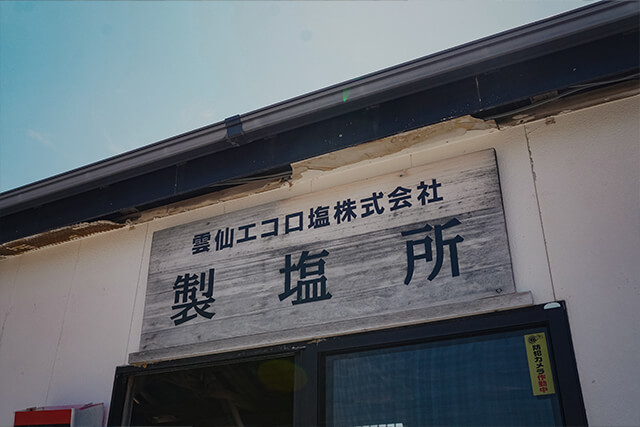
Mr. Kimura’s passion for salt production grew day by day. It was at the age of 60 that he decided to close his sushi restaurant and enter the world of salt manufacturing. I learned how salt is made using hot spring heat from a former employee of a salt factory in Obama, and I visited salt makers all over the country. Through trial and error, I arrived at my current method. In 2011, Kimura’s salt production finally began in earnest when he was granted permission to operate a salt manufacturing business at the source managed by the city.
Visit Unzen Ecolo Salt Co.

When we visited Unzen Ecolo Salt, located along the coast not far from the center of Obama Onsen Town, we found Mr. Kimura quietly working alone in a factory filled with the heat of the hot spring water. Hot water was pouring out of a drilling machine beside the factory, where a cloud of steam was rising, through a channel. The temperature of the spring water is 105 degrees Celsius, but this water is exposed to the air, so it’s probably 92.3 degrees Celsius,” said Kimura. There is a large magma pool at the bottom of Tachibana Bay. The reason the hot water at Obama Onsen is so hot is because it is so close to this magma pool, ” he says, pointing to the calm Tachibana Bay stretching out before him.
Making Unzen Ecolo Salt

The factory has a pool filled with hot spring water, in which several containers the size of a tatami mat are floated. In these containers, hot spring water and seawater pumped up from the seafloor of Tachibana Bay are added, and the salt is concentrated by slowly boiling the water in the pool. The salt concentration is about 0.2% hot spring water and 3% seawater. The blend is said to produce a mellowness that cannot be expressed by seawater alone. When the salt crystals harden, they are roughly scraped off with a special wooden spatula. Licking the salt at this point leaves a pungent taste on the tongue due to the nigari component, but drying the salt in the sun in a shed next to the factory rounds out the flavor and gives it a silky texture. Obama’s salt, which is made by slowly and carefully concentrating nature’s bounty, has gained a reputation by word of mouth and is now receiving orders from famous restaurants nationwide, including hotel restaurants, steak houses, sushi restaurants, and boulangeries.
The lack of sudden temperature changes produces salt as smooth as snow.
The size and texture of the crystals change depending on how the fire is set.
Environmentally friendly salt production
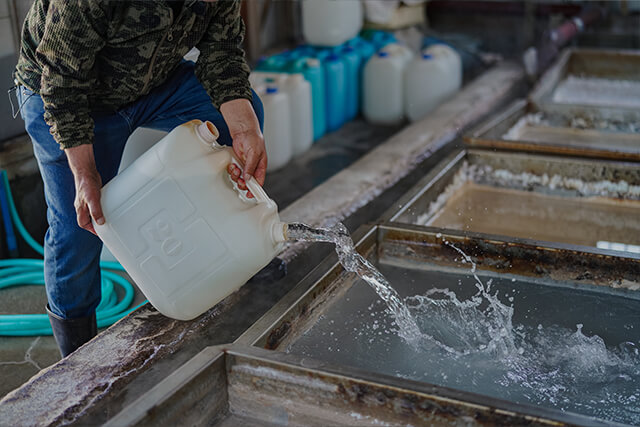
Most of the salt currently available in Japan is produced using a salt manufacturing method that requires a large amount of fuel, and is feared to be environmentally destructive due to its high CO2 emissions. Unzen Ecolo Salt, on the other hand, efficiently utilizes the heat from hot springs to produce environmentally friendly salt. The hot spring water used at Unzen Ecolo Salt is water that used to be discarded into the sea without being used. In Obama, 15,000 tons of hot spring water gushes out in one day. But in fact, about 35% of it is discharged into the ocean unused. This is a real waste. I thought there was no way to avoid using it to make salt,” says Kimura. Currently, “Unzen Ecolo Salt” produces about 1 ton of salt per year, and the utility cost is only 6,000 yen. The salt is produced by gradually evaporating brine from a high-temperature spring, which requires almost no fuel. It is truly an environmentally friendly method of salt production that does not waste nature’s bounty.
Product Usage and Characteristics
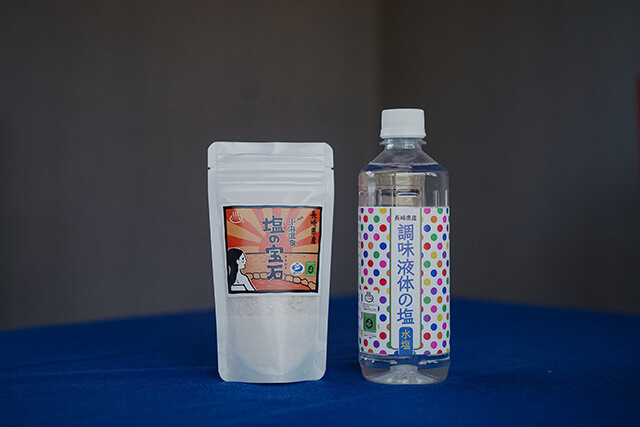
From the transportation of the underground seawater pumped up by drilling to the inspection and bagging of the products, Mr. Kimura does everything by hand to make “Unzen Ecolo Salt” salt. The salt comes in a variety of forms, from a fine powder that melts like snow to grains and liquid salt that leaves a nice texture on the tongue, but the most popular are “Kohama Onsen Salt Jewel” and “Seasoning Liquid Salt.
Obama Onsen Salt Jewel
A mild salt with minerals dissolved in the hot spring water and a delicious flavor. It is a well-balanced blend of hot spring water and seawater pumped up from the seabed of Tachibana Bay, with slightly coarse crystals. The crystals are slightly coarse and gently enhance the original flavor of the ingredients.
Seasoning liquid salt
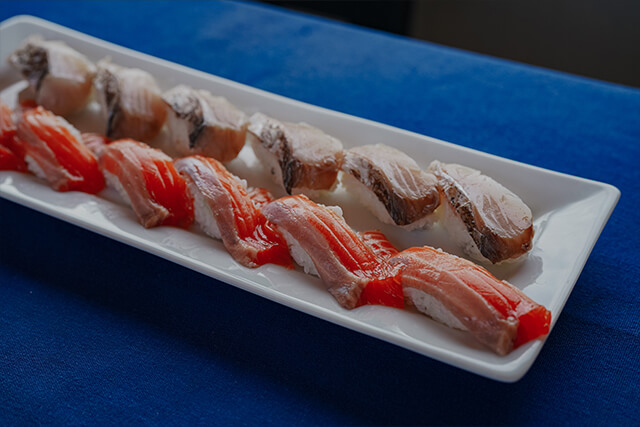
Liquid salt blended with hot spring water and seawater with a salt content of approximately 20%. Soak sashimi in this salt and refrigerate for half a day to two days to tighten the flesh and enhance the flavor. It can be used for grilled fish, yakitori, baking, etc. It is also recommended for making onigiri (rice balls),” says Kimura. This product is the result of his experience as a former sushi chef.
Mr. Kimura’s passion for salt production
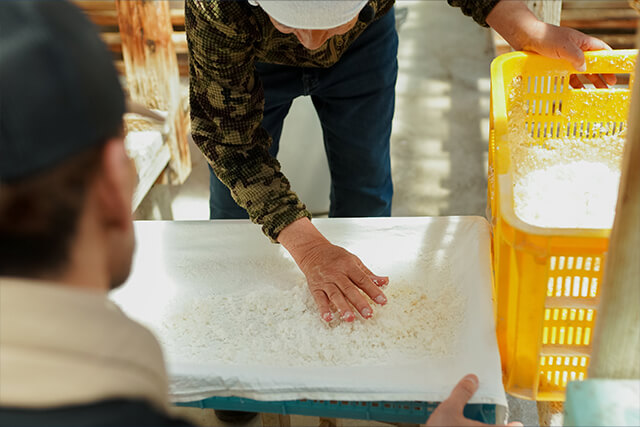
A survey revealed that the salt produced by Mr. Kimura contains a good balance of minerals that are ideal for the human body. Salt is like air to humans. We take it for granted, so the quality is important,” says Kimura. The taste of salt changes slightly depending on the weather and temperature, and like a living creature, salt shows different expressions every day. Kimura intends to devote the rest of his life to the charm and potential of salt.
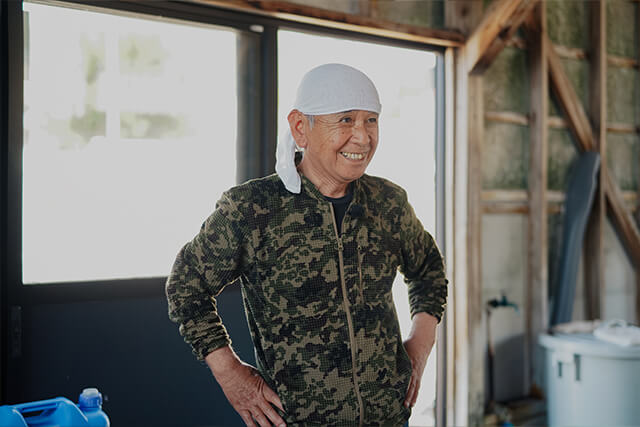
When asked about his future plans after 10 years of salt production, he replied, ” There is romance in salt production. I will just continue to silently make salt with the belief that the salt I make is the best salt available,” he said. The reason why Unzen Ecolo Salt is favored by food professionals is not only because of the condensed taste of the blessings of the sea and the mountains, but also because of Kimura’s earnest passion.




